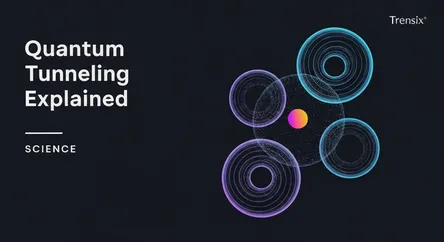Science
Quantum Tunneling Explained

Discover quantum tunneling, the bizarre phenomenon where particles pass through solid barriers, enabling technologies from flash memory to quantum computing.
What is it?
Quantum tunneling is a phenomenon in quantum mechanics where a particle, such as an electron, passes through a potential energy barrier that it classically shouldn't have enough energy to overcome. In classical physics, this would be like a ball rolling through a solid hill instead of over it. This is possible because particles at the quantum level also behave like waves. Their corresponding wave function doesn't abruptly stop at a barrier but has a probability of appearing on the other side. If the barrier is thin enough, typically 1-3 nanometers for electrons, the particle can seemingly teleport through it.
Why is it trending?
Quantum tunneling is a cornerstone of modern science and technology, making it a consistently relevant topic. It is fundamental to the operation of quantum computing and is the principle behind revolutionary tools like the Scanning Tunneling Microscope (STM), which lets scientists visualize and manipulate individual atoms. The phenomenon is also crucial for understanding astrophysical processes like nuclear fusion in the sun, where particles must tunnel through an energy barrier to fuse together and release immense energy. Ongoing research continues to find new applications, from electronics to quantum biology.
How does it affect people?
Quantum tunneling is integral to many technologies people use daily. It's the basis for flash memory, found in USB drives and solid-state drives (SSDs), which uses tunneling to write and erase data. However, it also presents a fundamental limit to shrinking electronic components; as transistors get too small, electrons can tunnel through insulating layers, causing current leakage and inefficiency. The effect's applications in microscopy have driven innovation in materials science and medicine, and its role in nuclear fusion continues to be explored for future clean energy solutions.